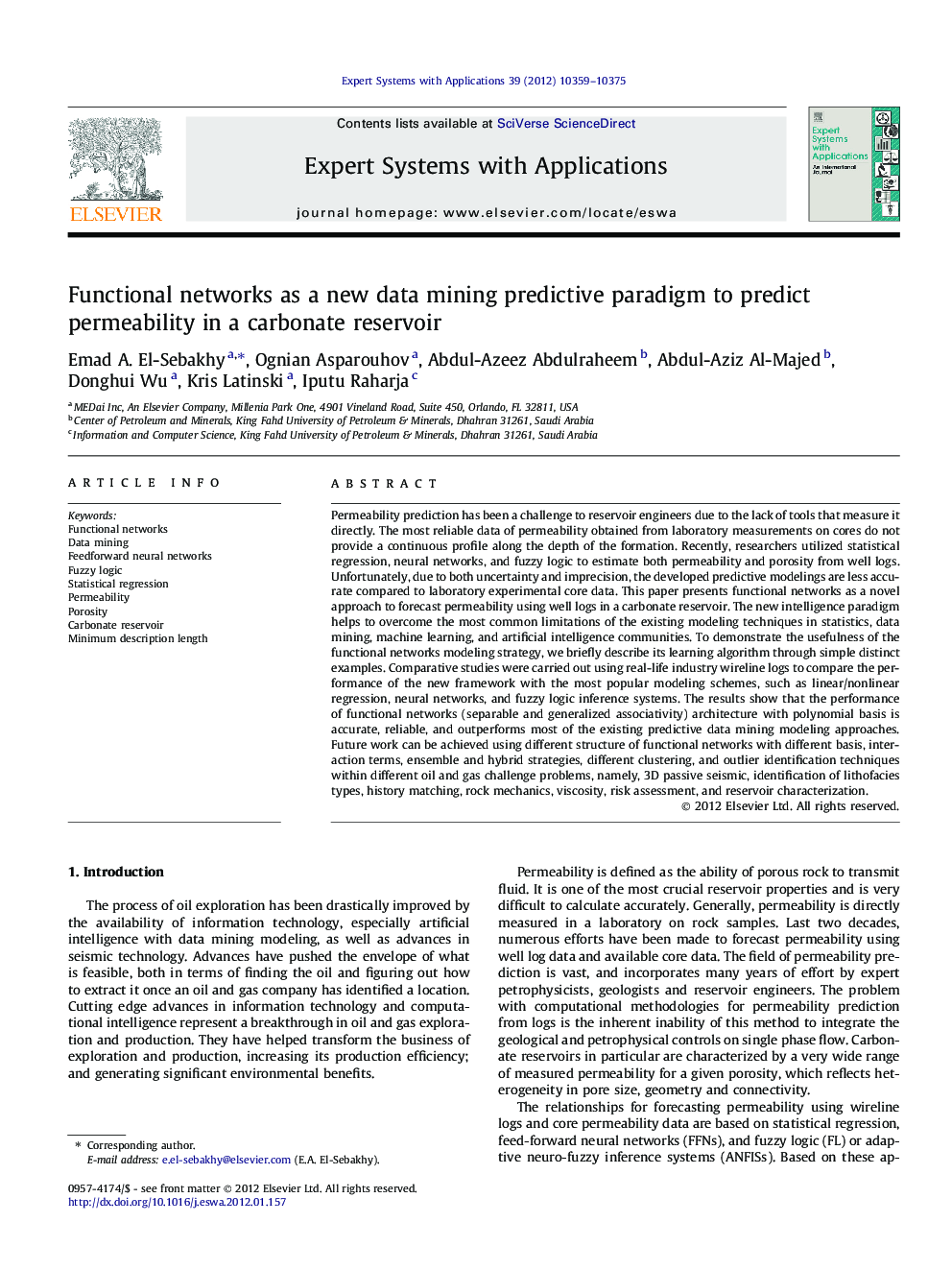| Article ID | Journal | Published Year | Pages | File Type |
|---|---|---|---|---|
| 387632 | Expert Systems with Applications | 2012 | 17 Pages |
Permeability prediction has been a challenge to reservoir engineers due to the lack of tools that measure it directly. The most reliable data of permeability obtained from laboratory measurements on cores do not provide a continuous profile along the depth of the formation. Recently, researchers utilized statistical regression, neural networks, and fuzzy logic to estimate both permeability and porosity from well logs. Unfortunately, due to both uncertainty and imprecision, the developed predictive modelings are less accurate compared to laboratory experimental core data. This paper presents functional networks as a novel approach to forecast permeability using well logs in a carbonate reservoir. The new intelligence paradigm helps to overcome the most common limitations of the existing modeling techniques in statistics, data mining, machine learning, and artificial intelligence communities. To demonstrate the usefulness of the functional networks modeling strategy, we briefly describe its learning algorithm through simple distinct examples. Comparative studies were carried out using real-life industry wireline logs to compare the performance of the new framework with the most popular modeling schemes, such as linear/nonlinear regression, neural networks, and fuzzy logic inference systems. The results show that the performance of functional networks (separable and generalized associativity) architecture with polynomial basis is accurate, reliable, and outperforms most of the existing predictive data mining modeling approaches. Future work can be achieved using different structure of functional networks with different basis, interaction terms, ensemble and hybrid strategies, different clustering, and outlier identification techniques within different oil and gas challenge problems, namely, 3D passive seismic, identification of lithofacies types, history matching, rock mechanics, viscosity, risk assessment, and reservoir characterization.
► Deal with generalized functions that are not fixed, but learnt from data. ► Have no any merit to permeability prediction from multiple of logs. ► Enhance oil recovery (EOR) and allocate the future drilling location. ► Functional networks permeability model is reliable with high accuracy. ► We recommend it for forecasting oil price, energy demand and supply.
